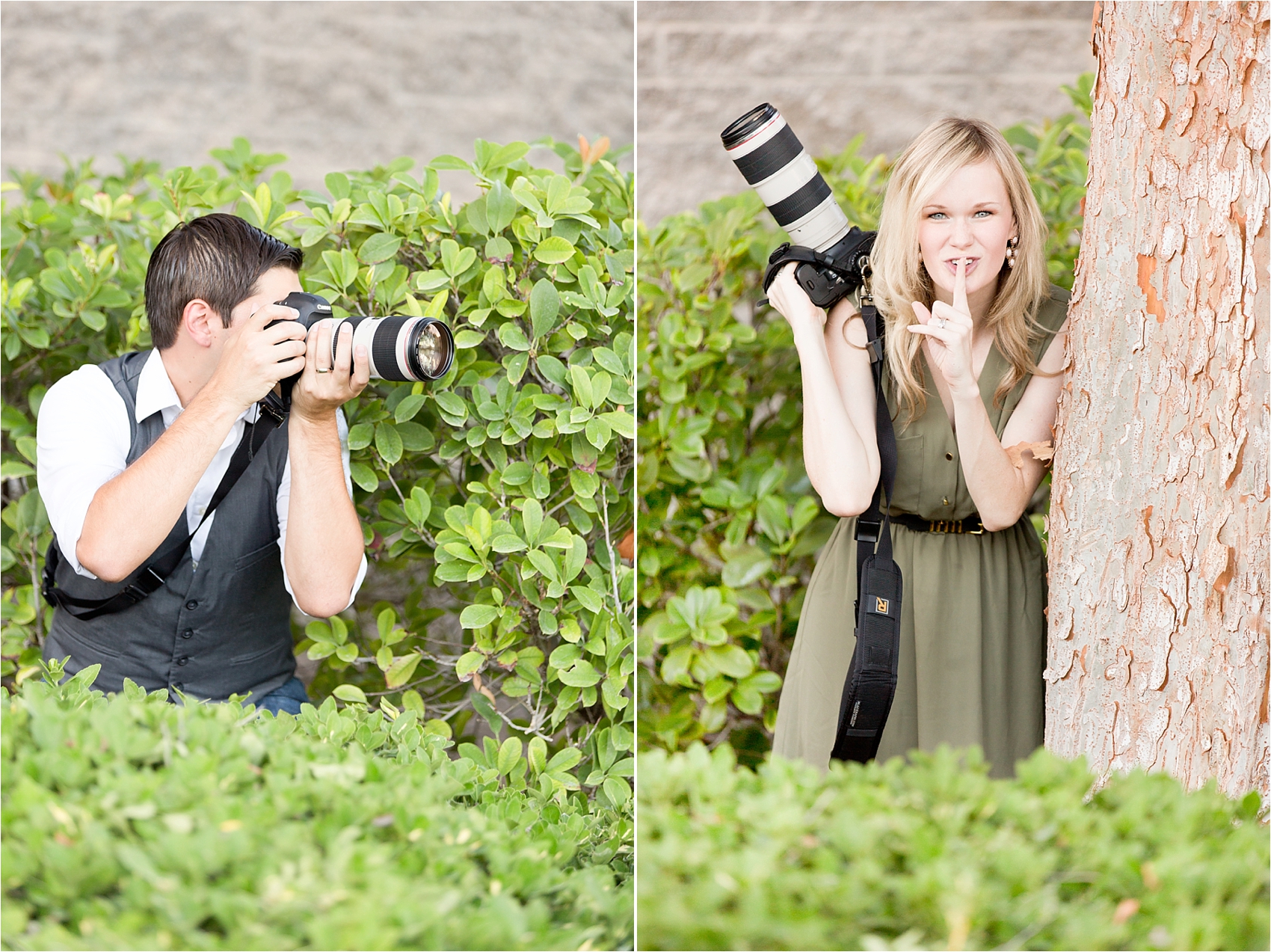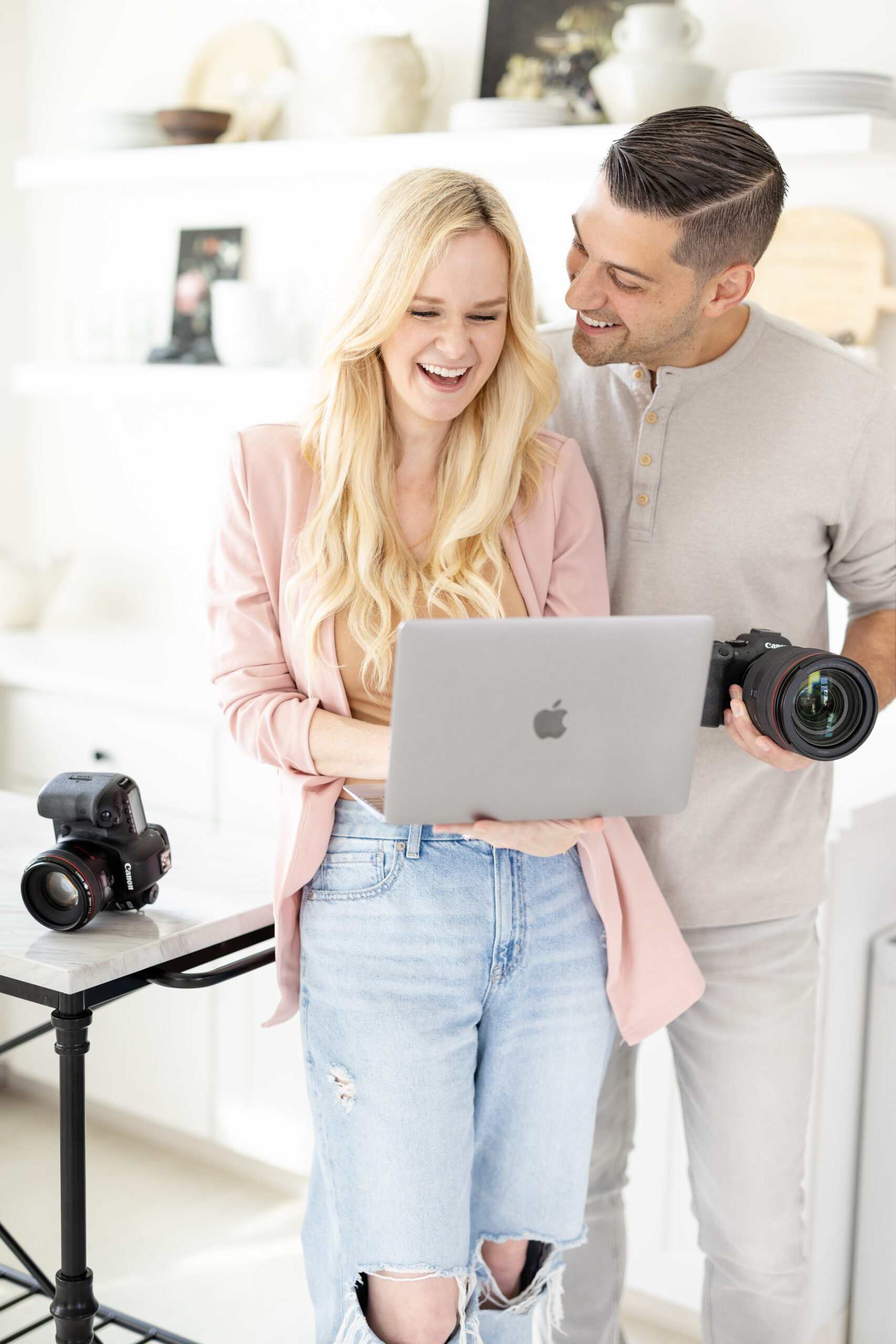Photographing a proposal feels pretty high stakes, right? There aren’t do-overs, which can make shooting a proposal feel nerve-wracking (and also so exciting!) With proposals, we only get one chance to capture the big moment, but with high risk… comes a high reward. If you’ve ever felt nervous as you prepare to shoot a proposal, just know you are not alone! We still experience those same jitters every time we gear up to shoot a proposal, but we’ve definitely learned a thing or two along the way to make them successful. In this post, we’ll walk you through the ten must-know secrets for how to photograph a surprise proposal, so you can feel confident that when he drops down to one knee, you’re going to nail it and capture moments your clients will cherish forever.
10 Must-Know Tips for Photographing a Proposal:
1. Do a Walkthrough
Between the elements of surprise and a nervous groom-to-be, a lot could go wrong. So reduce the risk as much as possible. How? Do a walkthrough one day before with the groom-to-be and any other co-conspirators (at the exact same time of day that he’s getting down on one knee is possible.) A walkthrough will help put the groom at ease and get everyone on the same page. If there are any holes in the plan, they’ll be discovered and fixed. This is also the time to make sure the future-bride-to-be won’t be able to see you from where she’s standing, but ensure you’ll be able to see her.
If you can’t meet in person ahead of time, we suggest Zooming or FaceTiming with your groom to nail down the details, and then scoping it out yourself the day before! That’s what we did for Megan and Joe’s surprise Paris proposal! Joe lives in Ohio, so we secretly FaceTimed him before we left, and then we went to the spot the day before so that we could text him photos of exactly where to go and what direction to face when he was down on one knee.

2. Help the Groom Choose the Best Light
We can’t always control the time a proposal is going to happen (golden hour is definitely our preference!), but we do want to make sure the light will be even, so that nothing distracts the eye from the magical moment. Give him your expert opinion on timing based on the scenario he’s dreamed up.

3. Show Him Where to Kneel
Preparing him on the right angle and positioning is key. Make sure you’re positioned so that when they’re facing each other, you can see both of their profiles and the full context all at the same time. If we can’t see him down on one knee, her reaction, and the environment around them all in one shot, we didn’t do our job of telling a complete story in one shot as well as we could of! Our goal is for one photo to be able to tell the whole story without a single word.

4. Use a Long Telephoto Lens
Our favorite lens for proposals is the 70-200mm 2.8. The length of the telephoto lens allows us to be physically far enough away that we’re not intruding on the moment — or ruining the surprise! — while still being able to get really close with our shot. And for as much as we love prime lenses, during a surprise proposal, we only have seconds to get a pulled back and tight version of the kneeling shot, so there’s really just not enough time to stop and change lenses, or to get the wide shot from father away and then run up for the close one. It all happens so fast friends. Because of that, long zoom lenses are our jam!

5. Sling Two Cameras and Big Memory Cards
If you’re a solo shooter, sling two cameras. There’s no time to troubleshoot if your primary camera throws a technical temper tantrum while he’s popping the question — and there’s definitely not enough time to change a memory card if yours gets full — so if there aren’t two of you, play it safe and have a backup on your body, and use the largest memory cards you have so you can fire away without changing.

6. Dress for the Job
Make sure to wear quiet shoes and clothes that don’t make a sound. Like, for example, pants with a material that swooshes. Leave any noisy bracelets or necklaces at home, too. Anything that might give away your position! Also, we like to wear items that are durable enough to protect us from thorns (yes, thorns!) if we’re creepin’ around in bushes, and neutral colors (that are maybe even slightly camouflage-y) that wouldn’t draw the eye of the future-bride-to-be. Having said that, dress to best blend in with your environment. If you’re shooting in a big city with lots of people around, like we were in Paris, normal clothes will do just fine.
7. Tell a Complete Story
One of the most important jobs of a photographer is to be a storyteller, and the story doesn’t start or end when he says, “Will you marry me?” We click our shutters to “silent” and start firing away the moment the couple is in sight. Don’t be worried that the bride is going to hear your camera. In our experience, with the silent shutter setting, she’s never once heard it or suspected a thing. Then, once the couple is in position for the moment, we prep for the most important shot: a pulled back horizontal image that shows their profiles and perspective. We can zoom in for tight shots second, but the context of the pulled back image is king.
Bonus Tip: When you’re prepping the guy in advance, ask him to give his bride-to-be a big hug right before he’s about to drop to one knee. That’s his signal to us that it’s about to happen, so we can be sure to get images not just when he’s down on one knee, but as he’s dropping, too. It also gives him a chance to kind of a sneaky way to rock her into position so we can see both of their profiles from our angle.

8. Stay in the Lens
Don’t move the camera away from your face once she says, “Yes!” Stay in the lens and just keep shooting. The progression of emotion is as powerful as the actual proposal. As soon as we have the shot and the seconds and moments right after, it’s okay to run out of hiding to get different angles and more direct shots of her (first) and then him. In the proposals we’ve done, the brides-to-be have been in so much shock that they didn’t even realize we were there until the whole thing was over and we were literally just a few feet away from them.
9. Introduce Yourself to the New Bride and Do a Mini-Engagement Session on the Spot
The shock causes brides to be in a daze, so speak clearly, especially if the bride doesn’t know you. It’s kind of like talking to a patient who’s coming out from under anesthesia. For example, “Hi! We’re Amy and Jordan! Your fiancé hired us to photograph your proposal. We’ve been plotting and planning with him for months! It’s so nice to meet you! Congratulations! You look beautiful!” The simpler, the better, to help them get a grip on the situation. From there, we say this: “Your fiance also hired us to take some engagement engagement photos for you now. Do you want to touch up your makeup before we get started?” Then, we pull out her makeup bag (that the groom snagged for us in advance) from our camera bag. She’s so thankful for this! Getting to do a quick 30-minute engagement session before sunset helps complete the story, and also gives the client an experience with us as the photographers (which might help in booking the wedding later!). Just make sure to be extra clear and calm with your posing instructions, since they’ll be more emotional and adrenaline-filled than during a typical engagement session.
Posing Help: If you need more posing help, click here to watch a free 1-hour online class with us called 5 Posing Secrets to Flatter Every Body.
After Megan and Joe’s quick engagement session, Joe planned to take Megan on a shopping spree in Paris so that she could pick out new outfits for a full engagement session the next day. Isn’t that the sweetest idea?!


10. Strategize Social Media
Proposals are a huge excitement-builder and a great marketing opportunity. Plan to maximize it, but not until the happy couple has the chance to tell their loved ones either in person or on the phone. We recommend asking them to hold posting on social media until you’ve posted the professional sneak peek online. When we explain to our couples that it’ll get more interaction that way — especially on Facebook — because it’ll combine both our audiences together, they’re usually excited about that! Just remember that their experience is always the most important thing, so respect any final decision they make regarding posting, and pat yourself on the back for a job well done!

Phew! That was a lot of information, friends, but we hope it helps the next time you find yourself photographing a proposal.



